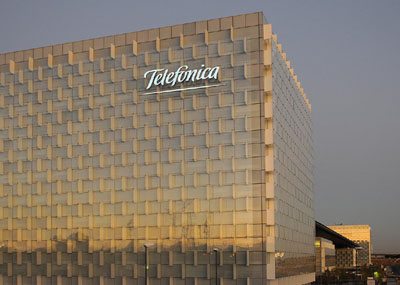Telefonica Innovation Ventures invests in open RAN provider Altiostar
ZURICH–As Telefonica continues to enhance its network and crystallize 5G plans, the Spanish-based multi-national operator this week, through its Telefonica Innovation Ventures investment arm, announced an investment in open radio access network infrastructure Altiostar, which specializes in software-based, virtualized RAN equipment.
Through industry consortia the Telecom Infra Project and O-RAN Alliance, a range of operators and vendors are collaborating to develop specifications establishing interoperability for multi-vendor RAN environments. The goal is shift network economics by swapping out purpose-built equipment for cheaper general-purpose equipment. In addition to taking cost out of RAN capex through the generational upgrade to 5G, open RAN initiatives could also foster competition in the network infrastructure vendor space that’s dominated by Ericsson, Huawei and Nokia.
Speaking this week at Huawei’s Global Mobile Broadband Forum in Zurich, Telefonica’s Enrique Blanco, global CTIO, discussed the importance of open RAN to the company’s network transformation strategy and stressed the importance of not just the capacity and latency gains associated with 5G but also reliability.
“We are designing and building cloud-based networks,” he said during a keynote session, calling the shift in network design “extraordinarily ambitious. Blanco said 5G networks have to be programmable; “This is a must because we need to monitor huge growth in the data capabilities for our customers. This network needs to be open and we need to get all these capabilities.”
Blanco hit on the contrast between an LTE outage today and a 5G outage in the future. If 5G goes down, “We will be stopping society,” he said. “We will be stopping cars, hospitals, industries. This is just impossible to happen. This is a significant part of the 5G future.”
5G is much more IT-centric than LTE networks, often described as requiring cloud-native design with flexible computing managed by automated software processes orchestrate workloads distributed from the core out to the edge of the network, which would include radio sites, customer premises, central offices and even devices.
“This future is not possible through the continued deployment of traditional RAN solutions,” Ashraf Dahod, Altiostar’s CEO said in a statement. “To be successful, operators must embrace new innovative solutions that possess the openness, programmability and automation delivered through a software-defined, cloud-native platform and an open supply chain. We are honored that a global operator like Telefónica is joining us on the journey of innovation in the RAN industry through disaggregation, network virtualization and building a multi-vendor open ecosystem.”
While current 5G services are focused on the consumer segment, the real, long-term revenue source is likely to come from providing specialized network service to support highly variable sets of enterprise and industrial use cases. A cloud-native network would be designed to serve up network slices to optimally service specific applications like manufacturing robotics, real-time video analytics and autonomous vehicles, for instance.
Blanco, in a statement accompanying the Altiostar investment announced, described this as the ability “to expand our network capabilities and make them available to our customers at the speed of software.”

